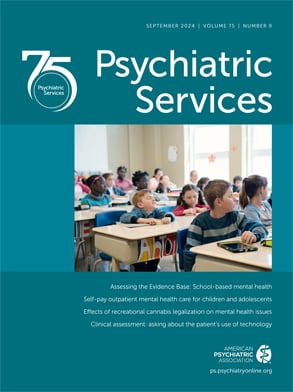Nearly 50 years ago, my mother, alarmed by my brother Robert's behavior, persuaded him to go for a psychiatric evaluation. My brother was 17 years old at the time. The doctor who interviewed Robert was chief of adolescent services at Kings County Hospital in Brooklyn. He urged my mother to have Robert hospitalized at once, declaring that Robert had schizophrenia, would always have schizophrenia, and would have to spend the rest of his life in mental hospitals.
I persuaded Robert to get a second opinion and arranged for him to meet with the senior psychiatrist for adolescent services at Bellevue Hospital. This doctor declared that there was "absolutely no need for Robert to be hospitalized"—and that he found him to be an imaginative young man who might benefit from psychotherapy but would probably not have much need for that, either.
According to the most comprehensive study to date of bipolar illness among young people, a recent front-page story reported, the number of American children and adolescents treated for bipolar disorder increased 40-fold from 1994 to 2003—from 20,000 to 800,000 (
1 ). Experts believe the number has risen further since. Some experts and many parents believe that this rise is a good thing because early diagnosis allows young people to get needed treatment that will result in a better quality of life. Others disagree, declaring that the disorder is overdiagnosed and that treating children with powerful antipsychotic drugs that have few proven benefits and potentially serious side effects is dangerous.
Thus the vagaries of psychiatric diagnosis continue. Behavior that to one parent or doctor is wild and alarming may seem merely animated and creative to another. What is alarming, then as now, though—and with young people as with adults—are the consequences of the rise in diagnoses: treatment plans that emphasize control of symptoms through excessive, often exclusive, reliance on medications.
When Robert was later hospitalized (sometimes diagnosed as having schizophrenia, other times as having bipolar disorder), our mother, in her pain and frustration, would cry out again and again after hospital visits, "Some day they'll discover it was all chemical—you'll see! Some day they'll discover it was all chemical…. "And when she did, I would be upset not by the possibility that my brother's condition was in part "chemical" but by her belief in the corollary: that if the condition were chemical, it could be treated and cured with chemicals.
On the day before the article about bipolar diagnosis appeared, another front-page story about mental illness reported that in a clinical trial of about 100 Russian patients, a new drug from Eli Lilly lessened symptoms in the way the old drugs did but without the serious side effects of current treatments (
2 ). Lilly asserted that the new drug could mark a breakthrough in the treatment of schizophrenia, and the chair of Columbia University's psychiatry department called the drug "one giant step forward for patients."
Anyone who has lived with, or is close to someone who has lived with, schizophrenia or bipolar illness knows that although these complex, debilitating conditions can sometimes be managed by medications, they remain generally refractory to cure and that, like the medications that control some of their symptoms, they are invariably lifelong.
But what if, whether among children or adults, symptoms of mental illness are reduced? What then? What does an individual do with the stigma—usually lifetime, too—that attaches to having been labeled as mentally ill? What does an individual do about the devastating side effects of the medications? (Zyprexa, which Lilly touted in 1996 as a breakthrough medication, with fewer side effects than older drugs, turns out to have serious side effects linked to diabetes.)
Ten years ago, Robert was put on a new antipsychotic medication and responded so well that the staff at his hospital, who had previously thought Robert might have to spend the rest of his life behind locked doors, got him ready for discharge. Then one morning, in a total panic, Robert telephoned. "Alan's leaving!" he shouted. "Alan's leaving!" Alan was Robert's social worker, with whom he had had a good long-term relationship, and Alan had been transferred overnight to another hospital. The result? Robert decompensated completely, and it was another year before he would again be readied for discharge. The question, then: why did the medication that worked so well on Monday stop working on Tuesday?
A decade ago, for a book, I interviewed several hundred people who had been institutionalized for mental illness and who had, to varying degrees, recovered enough to return to the world most of us live and work in. I asked them what had made the difference, and they attributed their good fortune to many things: medications, doctors, social workers, therapists, religion, and various programs. But in all instances, they said that the key had been a relationship—the presence in their lives of somebody—professional, family, or friend—who believed in them, who talked with them, and who was committed to staying with them for the duration.
Are there new and better diagnoses and medications? Of course. But if we continue to celebrate them in ways that allow us to regard others—our brothers, sisters, children, parents, and patients—as sets of symptoms to be managed, and not as human beings with complex histories and conditions, then we err greatly. This is true in all of medicine but perhaps more so with mental illness, where evaluations and treatment plans are based not on blood tests, biopsies, and MRIs but on behavior seen and reported. How wonderful it would be if there were chemical causes and chemical cures. Of course. How free of responsibility we might all be, then.

